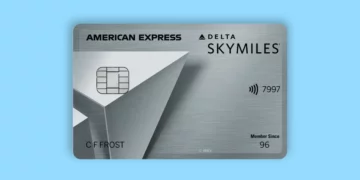Difference between credit cards with miles and points

Understanding Credit Cards: Miles vs. Points
When it comes to rewards credit cards, miles and points are two popular options designed to help you maximize your spending. Despite their similarities, these rewards systems cater to distinct preferences and travel habits. Understanding these distinctions can significantly impact your choices and ultimately enhance your overall travel experience.
Here’s a simple breakdown:
- Miles: Primarily used for travel and usually tied to specific airlines, miles are generally awarded based on the distance flown or the fare spent. For instance, if you regularly fly with Delta Airlines, you might opt for a co-branded Delta credit card that earns you Delta SkyMiles. These miles can often be redeemed for flights, seat upgrades, or even discounted airport services.
- Points: Typically offered by a wider range of programs, including hotel chains and flexible rewards systems, points can be earned through various purchases, not just travel-related expenses. For example, a credit card like the Chase Sapphire Preferred lets users earn points that can be used for travel bookings, merchandise, gift cards, or even cash back.
Both miles and points can enhance your travel experiences, but they come with unique features that cater to different needs:
- Miles: These rewards often focus primarily on flights and may come with airline partnerships for better redemption options. For example, if you accumulate American Airlines miles, you can potentially use them to book flights on partner airlines like British Airways, expanding your travel options significantly.
- Points: Providing more flexibility, points allow users to redeem rewards for a wider range of options. Rather than being limited to airlines, points can be converted into travel packages, hotel stays, or even rewards for everyday purchases like groceries and gas, making them highly versatile.
Choosing between credit cards with miles and points ultimately depends on your personal preferences and travel habits. If you are a frequent traveler who prefers a specific airline, a miles card might yield higher rewards. Conversely, if you value flexibility and variety in your rewards, a points card could be the better choice. By weighing the pros and cons of each option, you can make an informed decision that aptly matches your lifestyle, leading to exciting rewards and benefits that enhance your journeys.
In summary, understanding the differences between miles and points can empower you to select a rewards credit card that not only fits your spending habits but also maximizes your overall benefits. Make sure to review the fine print of card offers and consider your travel goals to make the best choice for your financial future.
CHECK OUT: Click here to explore more
Exploring the Benefits of Miles and Points
The decision between credit cards that offer miles and those that provide points can be a significant one. Each type comes with its own unique set of benefits and potential drawbacks, which can affect the overall value you receive based on your spending and travel behaviors. To help clarify these differences, let’s dive deeper into the specifics of each rewards system.
The Mechanics of Earning Miles
Miles are typically earned through spending on travel-related purchases, primarily flights. Most airlines or co-branded credit cards award miles based on the amount spent on tickets, with bonus miles often offered for particular spending categories like dining or booking directly through the airline’s website. Here’s a breakdown of how miles work:
- Accrual Rate: Miles are earned based on ticket price or flying distance, meaning higher fares will generate more miles. For example, purchasing a $500 flight may earn you 500 miles, while a ticket that costs $250 could yield only 250 miles.
- Redemption Opportunities: While miles can predominantly be redeemed for flights, they can also be used for upgrades, lounges, or even certain merchandise through airline affiliations. Some credit cards allow you to combine miles with partner airlines, enhancing your travel options.
- Loyalty Benefits: Frequent flyers are often rewarded through loyalty programs, allowing users to achieve elite statuses that confer additional perks, such as priority boarding, free checked bags, and access to airport lounges.
The Versatility of Points
Points, on the other hand, offer a broader set of options when it comes to earning and redeeming rewards. They can be accrued through a variety of spending categories, from groceries to gas purchases. This diversity often makes points cards more appealing to casual spenders or those who don’t fly frequently. Here’s how points generally function:
- Flexible Earnings: Many points cards allow users to earn points aside from travel-related purchases. For example, the Chase Sapphire Preferred card lets users earn double points on dining and travel, while also offering points on everyday expenses like groceries and online shopping.
- Redemption Choices: Points can be redeemed for a myriad of products, including travel bookings, hotel stays, gift cards, or statement credits. This flexibility can be ideal for those looking to use rewards for everyday purchases rather than limiting them to travel.
- Transfer Options: Some points programs allow users to transfer their accumulated points to various airline and hotel loyalty programs, offering expanded choice for travelers who want to maximize their rewards.
As you can see, understanding the workings of both miles and points can be quite beneficial when evaluating which type of rewards credit card best suits your lifestyle. Whether it’s the focused nature of miles or the flexibility of points, each option has its advantages that cater to different preferences and spending habits.
CHECK OUT: Click here to explore more
Assessing the Overall Value of Miles vs. Points
When choosing between credit cards that offer miles and those that provide points, it’s essential to assess the overall value each type of reward system brings. To truly understand which might be more beneficial for your spending habits and lifestyle, consider the following factors:
Cost Considerations
The financial implications of each rewards system can vary significantly. With miles, the costs associated with booking flights or upgrades often include additional taxes or fees that may not be evident initially. While the idea of flying for free sounds appealing, it’s vital to factor in these extra costs when evaluating the value of mile redemption. For instance, an airfare that can be purchased for $200 might require more than double that amount in miles plus additional fees when booked using miles.
In contrast, with points, the redemption process can often be less costly in terms of additional fees. Many credit card companies allow you to redeem points for a broad range of travel options, sometimes even at a fixed value. For example, earning points on your daily grocery shopping could lead to substantial rewards that can be easily used for travel expenses without hidden fees, making them an appealing choice for non-frequent travelers.
Travel Flexibility and Booking Methods
The flexibility of how you travel and book your arrangements is another critical aspect to consider. For travelers who appreciate the freedom to book a variety of options, points credit cards may fit better. They often allow users to book travel through their credit card’s travel portal, access a larger network of transportation options, and even cover other travel-related expenses effortlessly.
Miles, however, may often require you to adhere strictly to the airline’s rewards program, limiting your travel options. If you’re committed to a particular airline alliance, accumulating miles can be advantageous. Yet, if you frequently change airlines or rely on budget carriers, the confined nature of miles can be restrictive.
Reward Clarity and Complexity
Another important distinction lies in the transparency of earning and redeeming rewards. Points generally offer a more straightforward path toward understanding the actual value of your rewards. The value of points can often be calculated simply—for example, a specific number of points may translate to a clear dollar value for redeeming statement credits or gift cards.
Miles, on the other hand, can come with a degree of complexity and ambiguity. The scarcity of available flights on certain dates, coupled with a dynamic pricing structure (often referred to as “variable award pricing”), can leave cardholders second-guessing the true worth of their miles. This lack of clarity might make it difficult to know when to redeem for optimum value.
Ultimately, the key takeaway here is to evaluate your typical spending patterns and travel preferences when deciding whether a credit card that offers miles or one that provides points aligns best with your financial goals. By understanding the various factors that influence the value and accessibility of these rewards, you’ll be better equipped to make an informed choice.
SEE ALSO: Click here to read another article
Conclusion
In conclusion, both credit cards that offer miles and those that provide points present unique advantages and drawbacks that cater to different types of consumers. Understanding the key differences can empower you to find the option that aligns best with your lifestyle and financial goals.
For frequent travelers who prefer air travel and are loyal to specific airlines, credit cards that provide miles can be highly rewarding, especially if you make informed decisions about flight dates and restrictions. However, be mindful of potential hidden fees and complicated redemption processes that may diminish the value of your rewards.
On the other hand, credit cards that accumulate points offer greater flexibility and clarity. They allow you to redeem rewards for a wider range of travel options, daily expenses, and even gift cards without as many hidden costs. This adaptability makes points particularly appealing for individuals with varied spending habits or those who don’t travel often.
Ultimately, the best choice will depend on your personal preferences, travel frequency, and how much value you place on flexibility versus loyalty. Spend some time analyzing your spending patterns and desired travel experiences. By doing so, you can harness the benefits of either system and maximize your rewards to fulfill your travel dreams or enhance your everyday life. With the right card in hand, the journey toward maximizing your rewards can be a smooth one.

Linda Carter is a writer and financial expert specializing in personal finance and financial planning. With extensive experience helping individuals achieve financial stability and make informed decisions, Linda shares her knowledge on the our platform. Her goal is to empower readers with practical advice and strategies for financial success.





